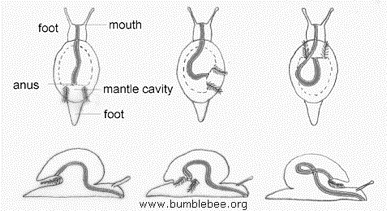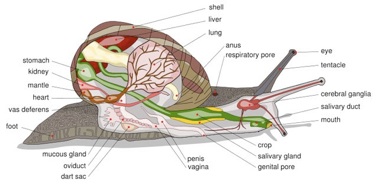Adaptations

Throughout the many many years snails have roamed this great earth, adaptations have arose to help the snail to survive in its environment. Although little information could be found on the adaptations Carychium exile possess differentiating them from other members of their family, land snails in general have acquired certain attainable qualities that allow them to survive in a habitat unlike the one their relatives reside in.
Many organisms found in the class Gastropoda possess gills (ctenidia) useful for extracting oxygen from the water. However, in the subclass Pulmonata or terrestrial land snails, this organ has been reduced to a pallial lung, which acquires oxygen from the dry air. Within the highly vascularized mantle cavity, expansion and contraction allows for gas (carbon dioxide and oxygen) exchange across a small opening to the outside.
These snails also undergo torsion during development, which eliminates the number of places vulnerable to the attack of predators but introduces a serious fouling problem. As described in the nutrition portion of this site, torsion can be defined as the 180 degree twisting of the visceral mass, bringing the anus and mantle cavity forward to a position above the head.
This diagram shows the lung sac land snails use to breathe, compared to the gill associated with other members of the class Gastropoda.
This image shows how torsion happens in gastropods and how it affects the resulting anatomy.


